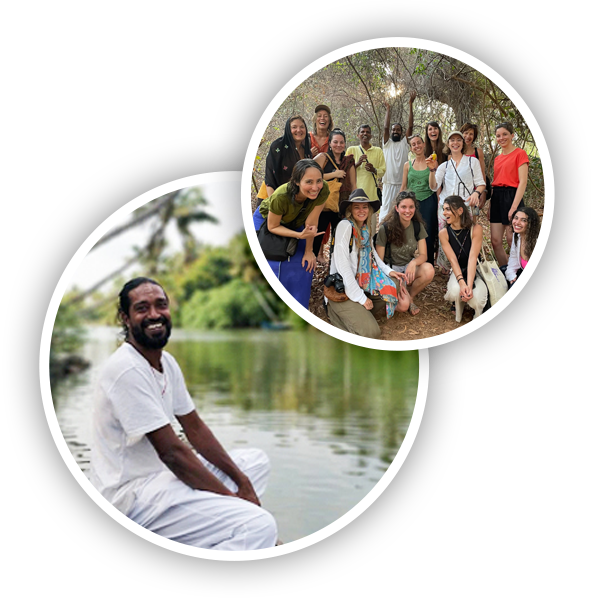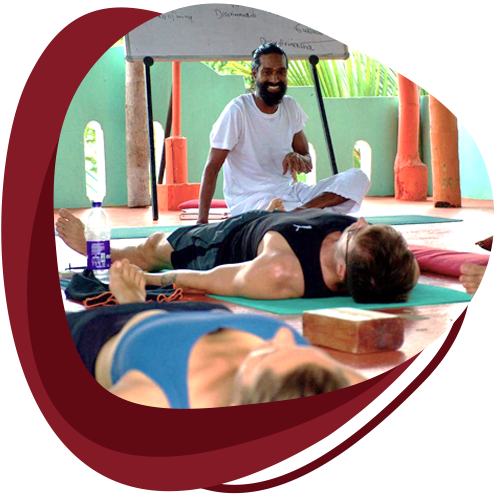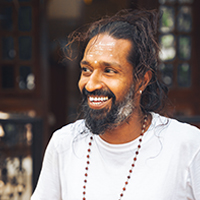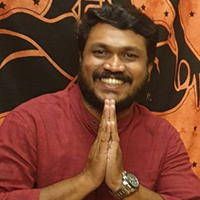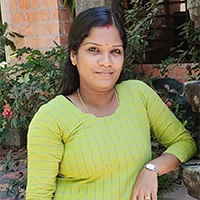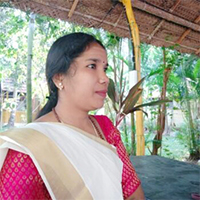1. In what languages do you offer yoga classes?
All courses are in English, BUT we offer to our students a guide book that resume most of the theory classes and photos of Asanas to help you for your study and future teachings, so it should help you to have a better comprehension of theory classes. Also students tend to help each other’s.
2. What type of yoga are you teaching?
We focus on traditional Hatha Yoga and Vinyasa Flow. Shiva has developed his own style, incorporating mantra with the breath. We follow ancient techniques based on Patanjali's philosophy. We believe that yoga is more than just bending and stretching; it is a path of total transformation, purifying negative tendencies through self-inquiry.
3. Do you teach Meditation ?
Yes, we do practice meditation and Pranayama everyday, it is also an important part of our teachings.
4. What food are you serving?
We offer 3 vegetarian meals per day, featuring traditional Kerala cuisine made with coconut oil. Our menu includes gluten-free dishes such as dosa (flatbread
made with rice flour, similar to chapati) along with salads, fruits, beans, and a wide variety of vegetables,
Our food is served frehsly cooked and suitable for most diets and presented as a buffet. We do not use too many spices or chili, focusing more on herbs for flavor.
We accommodate special dietary needs and allergies, please let us know in advance!
5. I don’t speak english that well. Can I still attend the course?
All courses are in English, but we offer our students a guidebook that
summarizes most of the theory classes and includes photos of asanas to assist with your studies and future teachings. This should help you gain a better understanding of the theory classes. Additionally, students tend to help each other.
6. What type of yoga are you teaching?
We focus on traditional Hatha Yoga and Vinyasa Flow. Shiva has developed his own style, incorporating mantra with the breath. We follow ancient techniques based on Patanjali's philosophy. We believe that yoga is more than just bending and stretching; it is a path of total transformation, purifying negative tendencies through self-inquiry.
7. Do you teach Meditation ?
Yes, we do practice meditation and Pranayama everyday, it is also an important part of our teachings.
8. What food are you serving?
We offer 3 vegetarian meals per day, featuring traditional Kerala cuisine made with coconut oil. Our menu includes gluten-free dishes such as dosa (flatbread
made with rice flour, similar to chapati) along with salads, fruits, beans, and a wide variety of vegetables,
Our food is served frehsly cooked and suitable for most diets and presented as a buffet. We do not use too many spices or chili, focusing more on herbs for flavor.
We accommodate special dietary needs and allergies, please let us know in advance!
9. Do you offer a diploma recognized by Yoga Alliance ?
We are registered with YOGA ALLIANCE INTERNATIONAL so you will receive a certificate after completion of the 28 days TTC. We have theory’s and practice exams. All our teachers are very qualified and they have been teachings for many years, you can check our curriculum.
10. How experienced in my yoga practice do I have to be to attend this course?
We had students who were beginners but had a strong mind. They followed through, and rested when needed during Asana class in Savasana, which is totally acceptable.
However, be aware that a teacher training is very intense. You will have to
practice Asanas 2 hours twice a day (morning and evening) for 6 days a week. Therefore you need to be dedicated and fit to follow this routine. Additionally you will have theroy classes, practice meditation and pranayama. All of this takes a lot of time and energy. If you are rather looking for a challenging or relaxing Yoga vacation, we recommend you to book one of our retreats instead.
11. What type of accomodation do you offer?
We offer private rooms, with a private bathroom and balcony for max 2 persons. We provide towels and sheets that are changed and washed weekly.
12. Do you have a washing machine?
No, but we can share the adress of local laundry services with you who will wash your clothes at low cost.
You also have a bucket in your room that you can use to wash your clothes by hand. By are happy to provide washing powder.
13. Do you have AC rooms?
Yes, we have 4 AC rooms available at extra cost, which depends on the length
of your stay. Just ask us for the availability and we'll send you all the information.
Every room is equipped with a ceiling fan and mosquito nets.
14. Is your school far from the beaches and restaurants and stores ?
We are located at 5 m. Walking distance to beaches and store and restaurants for your convenience
15. Is it ATM machine on the cliff and can we change money ?
There is an ATM machine in Varkala town, 15 m from our School you can get there by rickshaw for low cost.
Also it is possible to change money at TRAVEL AGENCIES on Varkala Cliff, 5m. Walking distance from our School.
16. What is the closest airport to your school ?
Trivandrum Airport
We offer free pickup at Trivandrum airport only.
We can help you to organize your departure, or travelling interest in Kerala or India with local travel agencies.
17. How Is The 300 Hour Different From The 200 Hour
Our 300h students have the opportunity to practice more teaching
classes and get different study material. Furthermore, they will be
trained in more detail in sequencing and will have more alignment
classes with our Lead Instructor Shiva Rishi.






